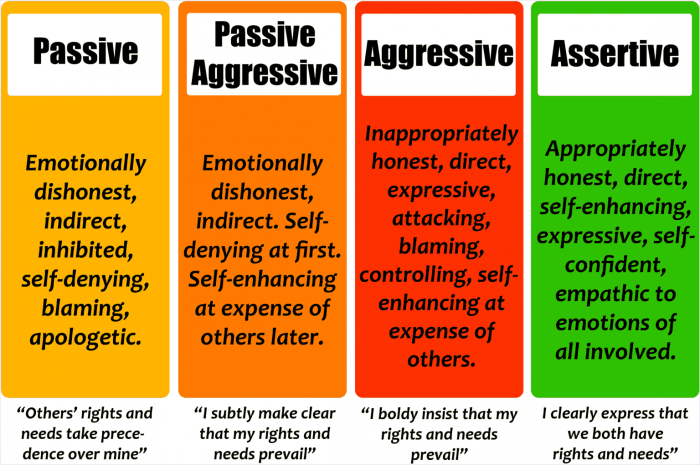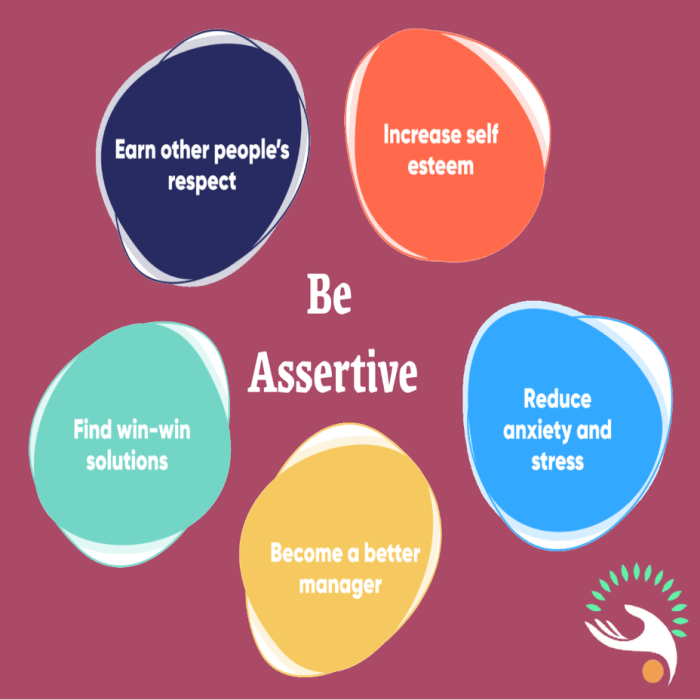A complete assertive message contains __________ kinds of __________ statements. – In the realm of communication, assertive messages hold immense significance as they convey thoughts and feelings directly and respectfully. A complete assertive message is characterized by the presence of two distinct types of assertive statements, each serving a crucial role in effectively expressing one’s position.
This exploration delves into the nature of these two statement types, examining their essential elements and the structure they form within a complete assertive message. Furthermore, it highlights the benefits of utilizing assertive messages and provides practical tips for their effective delivery.
Types of Assertive Statements: A Complete Assertive Message Contains __________ Kinds Of __________ Statements.

A complete assertive message contains two types of assertive statements: “I” statements and “You” statements.
“I” statementsexpress the speaker’s own thoughts, feelings, and opinions. They begin with the word “I” and focus on the speaker’s perspective. For example: “I feel frustrated when you interrupt me.”
“You” statementsexpress the speaker’s observations or interpretations of the listener’s behavior. They begin with the word “you” and focus on the listener’s actions or words. For example: “You often interrupt me when I’m speaking.”
Questions Often Asked
What are the two types of assertive statements?
A complete assertive message contains two types of assertive statements: “I” statements and “you” statements.
What are the essential elements of an assertive statement?
The essential elements of an assertive statement include clarity, directness, and respect.
How can I improve my delivery of assertive messages?
To improve your delivery of assertive messages, focus on maintaining eye contact, using a clear and confident tone of voice, and choosing words that are respectful and assertive.

